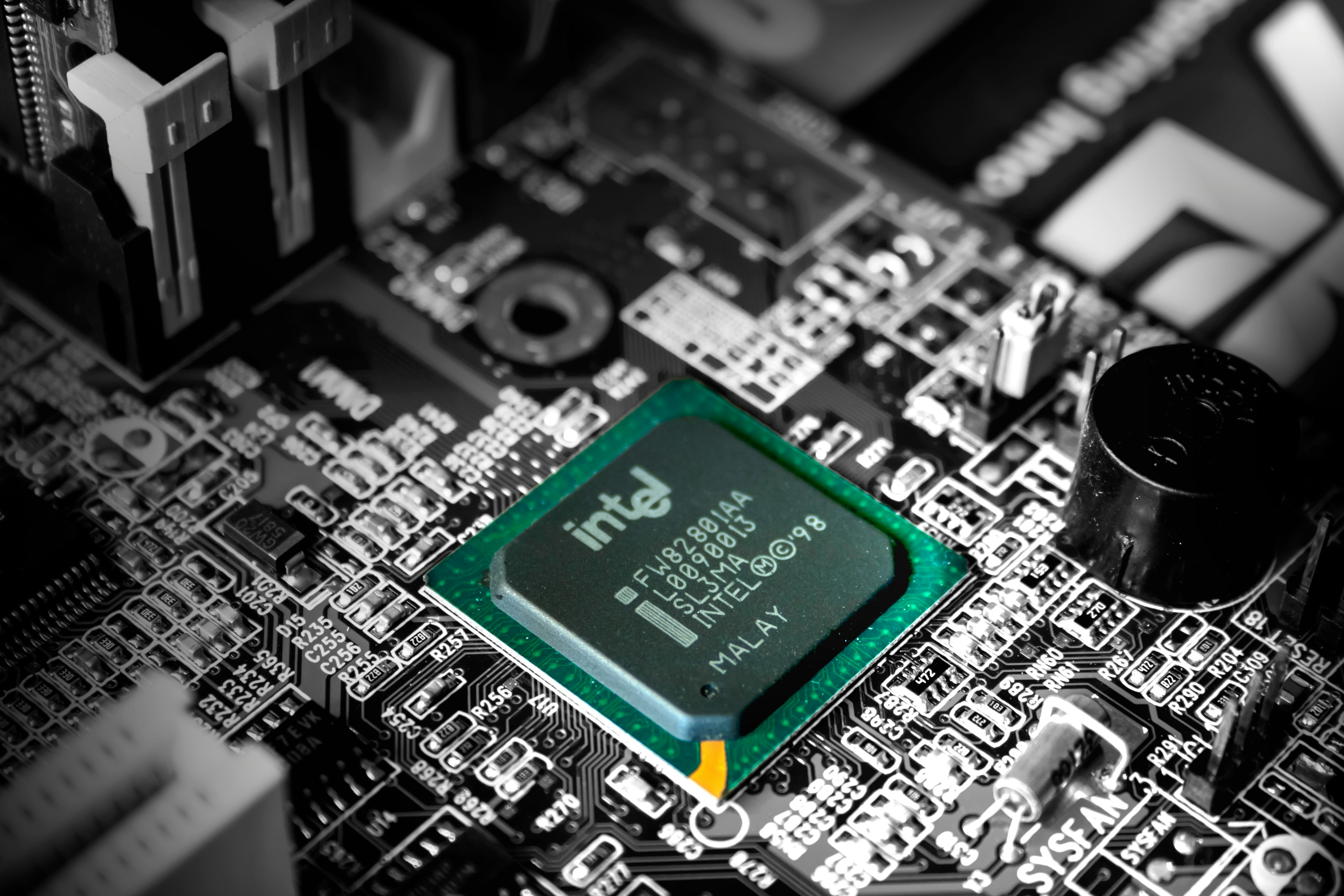
The Future of Semiconductor Jobs: Careers That Don’t Exist Yet
Semiconductors are the hidden foundation of modern life. These microscopic chips power everything from smartphones and laptops to cars, satellites, medical devices, and national defence systems. Without them, today’s digital economy simply wouldn’t exist.
Globally, the semiconductor market was worth more than $600 billion in 2023 and is projected to surpass $1 trillion by 2030. Demand is accelerating as industries digitise and technologies like AI, 5G, electric vehicles, renewable energy, and quantum computing expand.
In the UK, semiconductors are viewed as strategically vital. The government’s UK Semiconductor Strategy, published in 2023, commits £1 billion over 10 years to research, design, and supply chain resilience. While the UK does not operate mega-fabrication plants like Taiwan or South Korea, it has globally recognised strengths in design, R&D, and compound semiconductors, with hubs in Cambridge, Manchester, and South Wales.
The semiconductor industry is undergoing profound change. Traditional silicon-based chips are reaching physical limits, leading to the rise of compound semiconductors, photonics, nanotechnology, and quantum devices. This technological shift will create entirely new jobs. Many of the most important semiconductor careers of the next 20 years don’t exist today.
This article explores why semiconductors will create new jobs, the future careers likely to emerge, how current roles will evolve, why the UK is well placed, and how professionals can prepare now.
1. Why Semiconductors Will Create Jobs That Don’t Yet Exist
1.1 Exponential Demand for Chips
Chips are no longer confined to consumer electronics. Modern cars require over 1,000 chips, wind turbines depend on advanced semiconductors, and even household appliances are becoming “smart”. Demand for specialist, application-specific chips will generate careers in design, scaling, and integration.
1.2 Materials Innovation
Silicon, the dominant material for decades, is nearing physical limits at nanometre scales. New materials such as gallium nitride (GaN), silicon carbide (SiC), and graphene are enabling smaller, faster, and more energy-efficient chips. Careers will centre on developing, testing, and scaling these advanced materials.
1.3 AI and Machine Learning Integration
AI is driving demand for specialised accelerators like GPUs, TPUs, and neuromorphic chips. Future roles will involve co-designing chips and AI algorithms together, ensuring maximum efficiency and performance for machine learning tasks.
1.4 Quantum and Photonic Devices
Quantum computing and photonics represent the next frontier in processing. Both require breakthroughs in semiconductor design and manufacturing. Careers will emerge that blend quantum physics, photonics, and chip engineering.
1.5 Supply Chain Resilience and National Security
The global chip shortage of 2020–22 exposed vulnerabilities. Governments now treat semiconductors as a national security asset. Careers in supply chain planning, risk management, and secure logistics will expand dramatically.
1.6 Sustainability Pressures
Chip production consumes vast amounts of water and energy. With climate change and ESG commitments rising, careers in green chip manufacturing, recycling, and sustainable process engineering will become central.
2. Future Semiconductor Careers That Don’t Yet Exist
Here are ten roles likely to appear in the coming decades:
2.1 Quantum Device Fabrication Specialist
These specialists will design and manufacture chips for quantum computers, working with superconducting qubits, trapped ions, or photonic systems. They’ll bridge the gap between cutting-edge physics and industrial-scale production.
2.2 Semiconductor Materials Scientist – Graphene & Beyond
Researchers will develop materials beyond silicon. Graphene, with its extraordinary conductivity, or GaN, with its efficiency at high voltages, could revolutionise industries from aerospace to energy. Materials scientists will drive these breakthroughs.
2.3 AI-Optimised Chip Architect
AI workloads are unique. Architects in this role will co-develop chips and machine learning frameworks together, producing tailored designs for industries such as autonomous vehicles, natural language processing, or drug discovery.
2.4 Supply Chain Resilience Manager
Future chips will depend on secure, diversified supply chains. Specialists will model risks, manage logistics, and work with governments to ensure critical semiconductor availability during geopolitical or climate disruptions.
2.5 Chip Recycling and Sustainability Engineer
As billions of devices reach end-of-life, engineers will pioneer methods for reclaiming rare earth metals, reducing toxic waste, and designing chips that are easier to recycle. Sustainability will become a core industry concern.
2.6 Photonic Semiconductor Designer
These engineers will create chips that process information using photons instead of electrons. The result will be ultra-fast communications and computing power beyond the limits of silicon.
2.7 Cyber-Secure Hardware Specialist
With hardware tampering and “chip backdoors” posing risks to national security, specialists will design chips that are inherently resistant to hacking and espionage.
2.8 Nano-Manufacturing Process Engineer
As fabrication drops below 1 nanometre, new processes will be required. Engineers in this role will design atomic-level manufacturing techniques using advanced lithography, plasma etching, and nanofabrication tools.
2.9 Semiconductor Policy & Trade Strategist
Chips are as much about politics as physics. Specialists will shape trade policies, manage subsidies, and negotiate international agreements to secure semiconductor access.
2.10 Edge Device Chip Integrator
Billions of IoT devices will require highly efficient, secure chips. Engineers will design and integrate semiconductors tailored for smart homes, wearable health tech, and industrial IoT.
3. How Today’s Semiconductor Roles Will Evolve
3.1 Chip Designer → AI-Integrated Architect
Traditional designers will expand into hybrid chips optimised for AI, neuromorphic computing, and machine learning.
3.2 Process Engineer → Nano-Manufacturing Innovator
Process engineers will work at atomic scales, developing fabrication techniques to push Moore’s Law further.
3.3 Test Engineer → Quantum Device Validation Specialist
Testing fragile quantum and photonic chips will require new methods to ensure reliability at ultra-small scales.
3.4 Supply Chain Analyst → Global Resilience Planner
Analysts will move into strategic planning roles, ensuring supply chains are robust, diversified, and geopolitically secure.
3.5 R&D Scientist → Sustainable Materials Pioneer
R&D will focus increasingly on sustainable semiconductors for electric vehicles, renewable energy, and climate technologies.
3.6 Hardware Engineer → Cyber-Secure Hardware Designer
Security will become central. Engineers will embed tamper resistance and encryption into hardware itself.
3.7 Manufacturing Technician → Autonomous Fab Supervisor
Technicians will manage highly automated, robotic fabrication plants, ensuring AI and machine-led production runs smoothly.
3.8 Quality Assurance Specialist → AI-Enhanced Reliability Engineer
Quality specialists will use AI to predict failures, run simulations, and prevent faults before chips leave the fab.
4. Why the UK Is Well-Positioned for Future Semiconductor Jobs
4.1 Government Strategy
The UK Semiconductor Strategy provides £1 billion over 10 years to strengthen design, R&D, and supply chain resilience. While not competing in mega-fabs, the UK is focusing on strategic niches such as compound semiconductors.
4.2 Academic Strength
The UK is home to world-leading research. Cambridge University is a hub for semiconductor design, Manchester pioneered graphene, and Imperial College leads in nanofabrication. These institutions train the talent pipeline.
4.3 Design Leadership
ARM Holdings, headquartered in Cambridge, is the crown jewel of UK semiconductors. Its designs power more than 95% of the world’s smartphones. This design leadership provides a global competitive edge.
4.4 Regional Innovation Hubs
South Wales: the Compound Semiconductor Applications Catapult is a world leader.
Cambridge: a global centre for design and start-ups.
Manchester: graphene and advanced materials innovation.
4.5 International Collaboration
The UK is working closely with the US, EU, and Asian partners on supply chain resilience, research, and technology standards. Collaboration ensures British talent stays globally relevant.
5. Preparing for Semiconductor Jobs That Don’t Yet Exist
5.1 Build Strong Foundations
Core knowledge in physics, materials science, and electrical engineering remains essential. Without these, advanced semiconductor roles will be inaccessible.
5.2 Develop Interdisciplinary Expertise
The future lies at intersections: semiconductors and AI, quantum physics, photonics, sustainability, and cyber security. Professionals should cultivate breadth as well as depth.
5.3 Gain Practical Experience
Hands-on exposure is vital. Internships at semiconductor firms, lab placements, and participation in industry R&D projects give candidates credibility.
5.4 Learn Emerging Tools
Skills in EDA (Electronic Design Automation) software, nanofabrication tools, and AI-assisted design will be critical.
5.5 Prioritise Ethics and Sustainability
Professionals must understand the environmental impact of semiconductor production and embrace circular economy principles.
5.6 Engage with Professional Networks
Joining TechWorks UK, SEMI, or IEEE connects professionals to training, conferences, and industry leaders.
5.7 Commit to Lifelong Learning
The field moves quickly. Continuous learning through CPD, micro-credentials, and postgraduate study will be essential to remain competitive.
Mini-Conclusion Recap
Semiconductors are at the heart of every digital technology, but the chips of tomorrow will look very different. From quantum device fabrication specialists to chip recycling engineers, entirely new careers will shape the future. The UK’s strengths in design, research, and compound semiconductors make it a key player in this transformation.
Conclusion
The future of semiconductor jobs will be defined by miniaturisation, innovation, and global strategy. As chips become faster, smarter, and greener, new roles will emerge at the intersection of engineering, physics, and geopolitics.
For professionals, the opportunity is clear: build strong foundations, embrace interdisciplinarity, and prepare for continuous change. The semiconductor jobs that don’t exist today could soon become the most critical careers of the digital economy.


